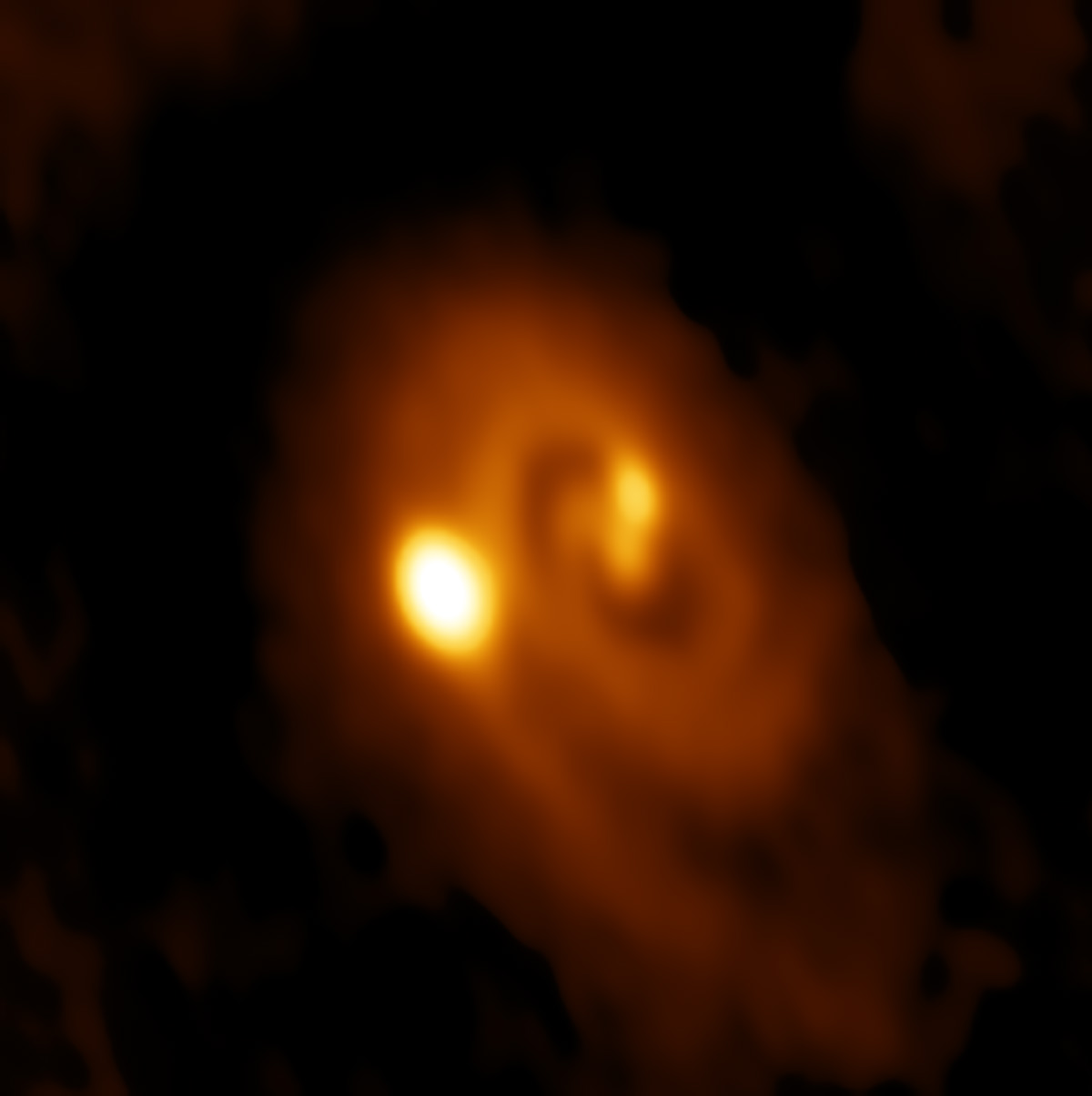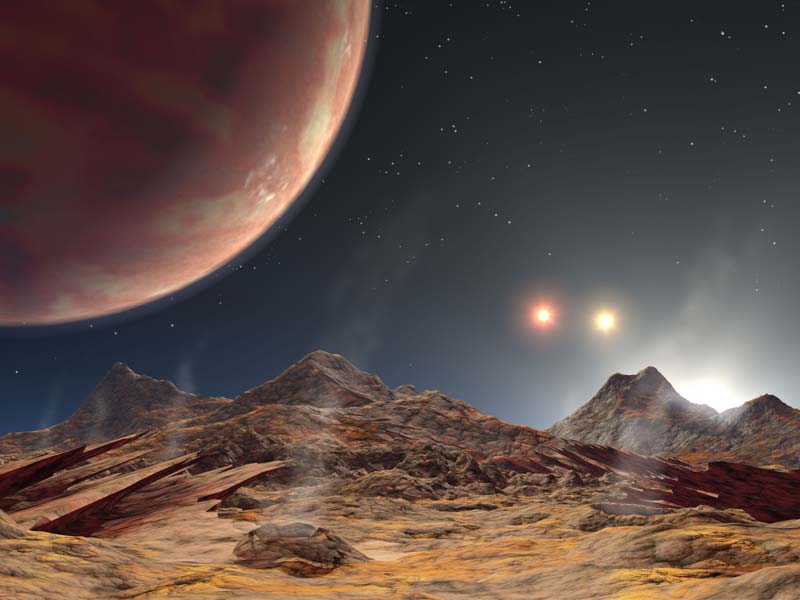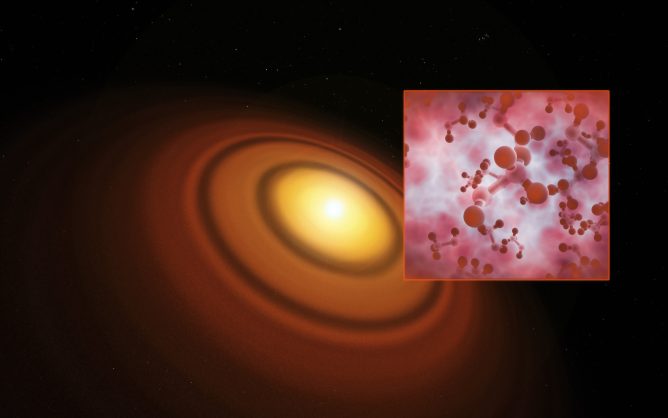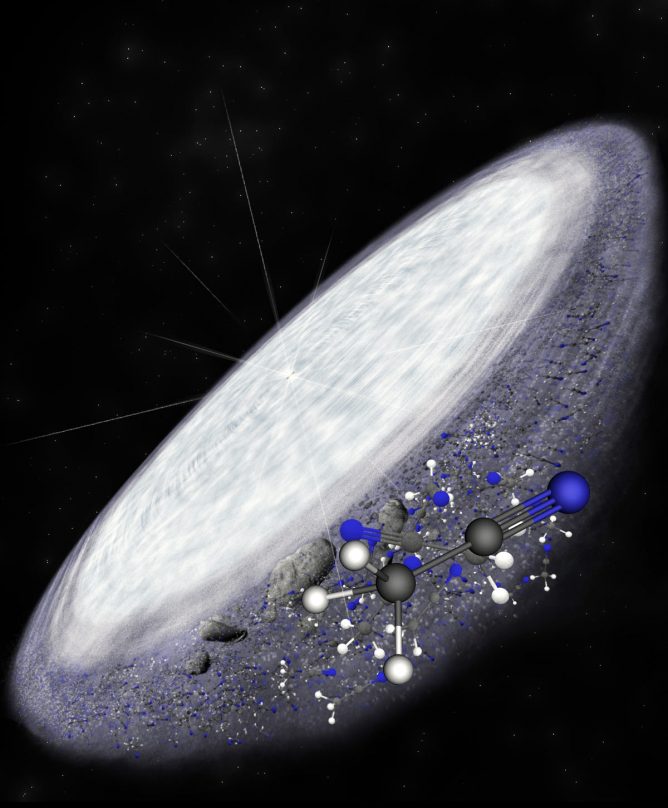2017.05.09
Interview with ALMA Public Outreach Officer : Mysteries of the Universe vol.1 Can Life Exist on Other Planets?
One of the scientific goals of ALMA is to explore building blocks of life. What is the likelihood of the existence of Earth-like planets and extraterrestrial life? To find the answer for simple questions like this and know more about the mechanism of the universe, we interviewed with ALMA EPO officer Masaaki Hiramatsu.
Interviewed and written by Toshihiro Nakamura
Photographed by: Nozomu Toyoshima
Star’s “Length of Life” is a Key to the Evolution of Life
— You mentioned that a quite number of planets may have simple life, but what is the probability of stars with a variety of higher forms of life like the Earth?
Hiramatsu: Again, it’s hard to answer because we only know about the life on earth. However, the only thing for sure is that if the Sun was heavier, there wouldn’t have been enough time for the evolution of life on earth.

— What do you mean by that?
Hiramatsu: It is thought that heavier stars have shorter length of life. The estimated length of life of the Sun is approximately 10 billion years. On the other hand, a star twice the weight of the Sun only survives one billion years, equivalent to 1/10 of the Sun.
— If the central star of a planetary system burns out, there will be no further evolution of life on the planets that have orbits around it.
Hiramatsu: In other cases, extrasolar planets cannot have an environment like the Earth for a different reason. The Sun is only a star in our solar system, but in the universe many stars form binary or multiple star systems where two or more stars orbit each other.
For example, this is an image of a forming triple protostar system L1448 IRS3B 750 light years away from the Earth, which was first clearly imaged by ALMA and the US radio telescope JVLA. This crucial image became possible by ALMA with improved sensitivity 10 times higher and resolution 2 times higher than the conventional observation technology.
However, even if a planet was formed around such a multiple star system, it could spin out of its system due to the instability of the orbit.

Triple protostar system L1448 IRS3B observed by ALMA
— Then, is the Earth considered as a rare planet that has maintained good environment for life over 4.6 billion years after birth?
Hiramatsu: It’s also still unknown. Because there are many planets that are lighter (longer in length of life) than the Sun in the universe.
— Which type of stars is larger in number, stars that are heavier or lighter than the Sun?
Hiramatsu: Predominantly lighter ones. Some of the planets around a light star may have an environment where life can evolve properly. And, I said earlier that planetary orbits get unstable in multiple star systems, but in recent observations, it has been found that some multiple star systems also have planets.
— I remember a scene of the “Star Wars” movie. The home planet where the main character Luke Skywalker was born has two suns. I was surprised to know that such planets really exist.
Hiramatsu: Right. So, with future observations and researches of extrasolar planets, we will be able to know if such environment with life as the Earth is a miraculous event or common in the universe.

Artist’s conception of scenery from an extrasolar planets that has multiple stars.
Earth’s Delicate System Nurturing Life
— During the Earth’s history over 4.6 billion years, wasn’t there any incident that threatened the peace of life?
Hiramatsu: Actually, there were collisions of meteorites in the history, but an extreme example would be that if a massive star close to our solar system had a supernova explosion at the end of its life, the Earth’s atmospheres could have been blown off completely.
— Atmospheres blown off from the Earth!! Just the thought of it makes me horrified.
And, it is thought that dinosaurs became extinct by a collision of a massive asteroid. The asteroid fallen on earth is supposedly about 10 km in diameter but if the size of the asteroid was larger, not only dinosaurs but also primitive mammals might have died out and consequently evolution leading to human beings wouldn’t have occurred.
— I heard our solar system also travels around in the Galaxy. Is there any chance that stars and planetary systems will collide with each other?
Hiramatsu: If we compare the Sun to a baseball (7 cm in diameter) and put it in Tokyo, the position of the closest star (another baseball) will be in Beijing 2000 km away. If these two balls start to move, they will never hit each other, right? So, a collision of two stars will never happen within a galaxy, but there are occasional collisions of stars forming a binary system.
— The Earth’s atmosphere has the ozone layer that protect life from ultraviolet rays from the Sun. Is this also regarded as a delicate system of the Earth?
Hiramatsu: Yes. Ozone is made up of oxygen, but oxygen itself is generated by living organism on earth. It is thought that animals have evolved to a larger size because they successfully got a mechanism to have oxygen as their source of energy. In this way, such an impeccable system was complete where living organism generates oxygen and the ozone layer, and as a result of it, creatures make further evolution.










